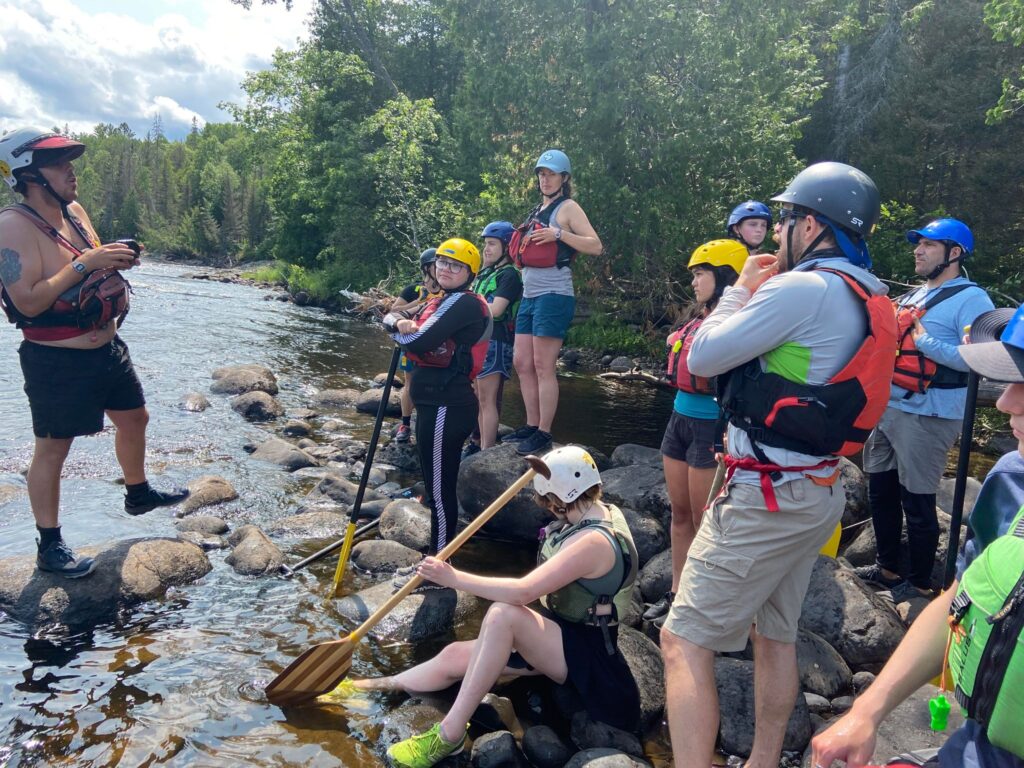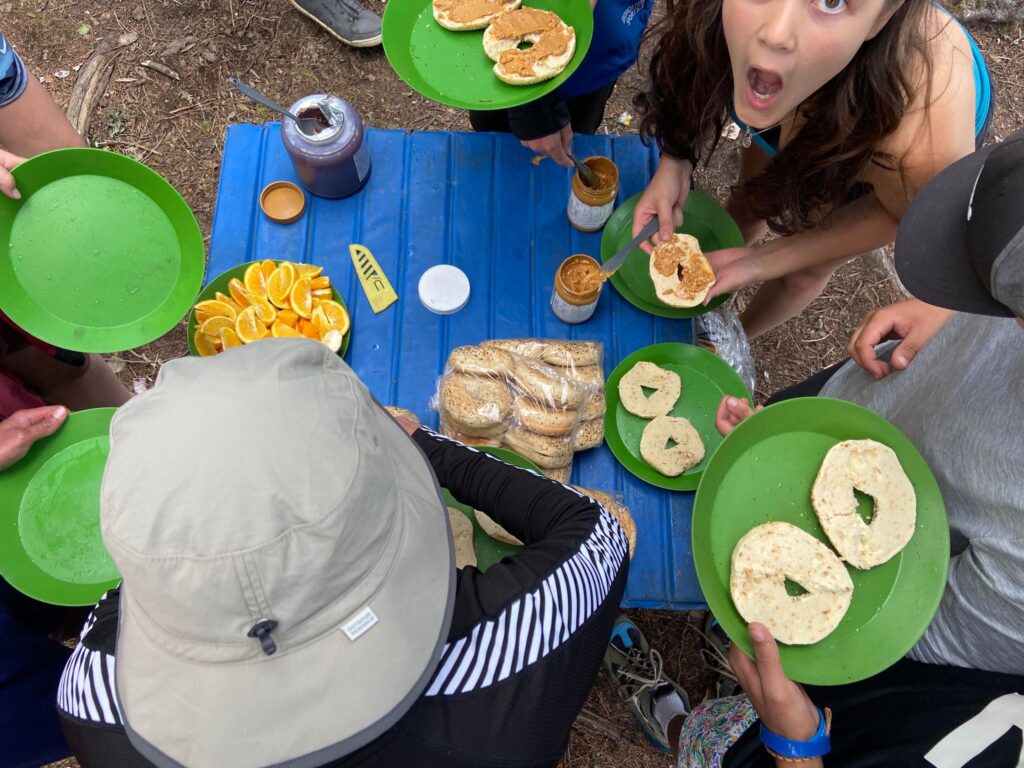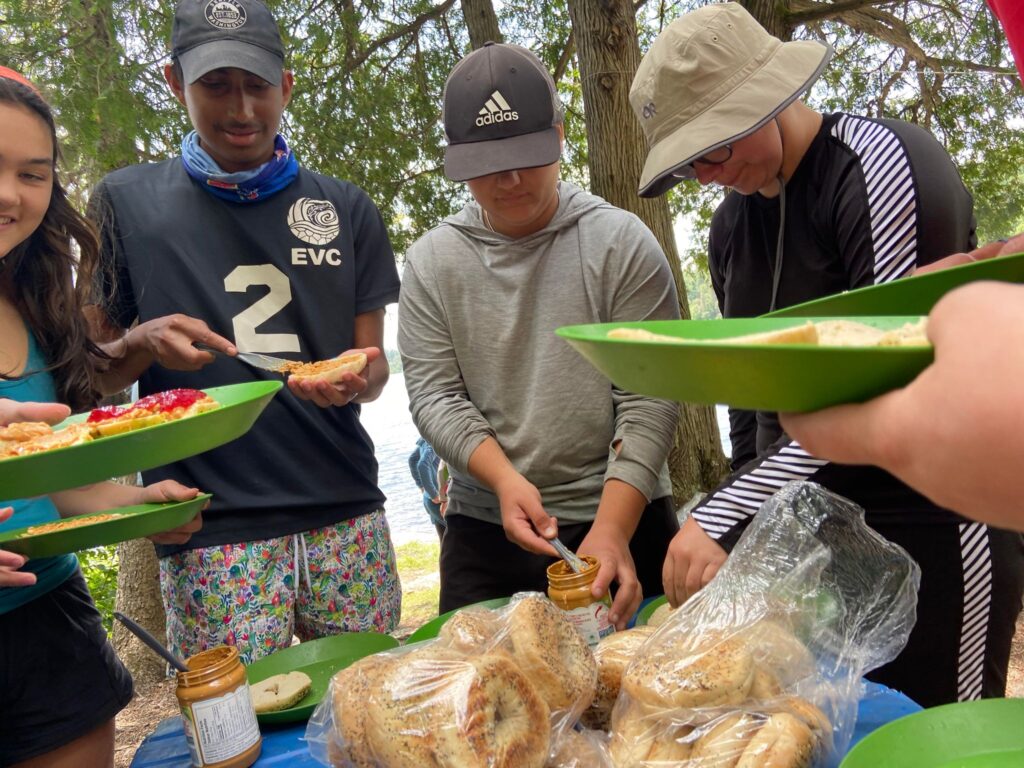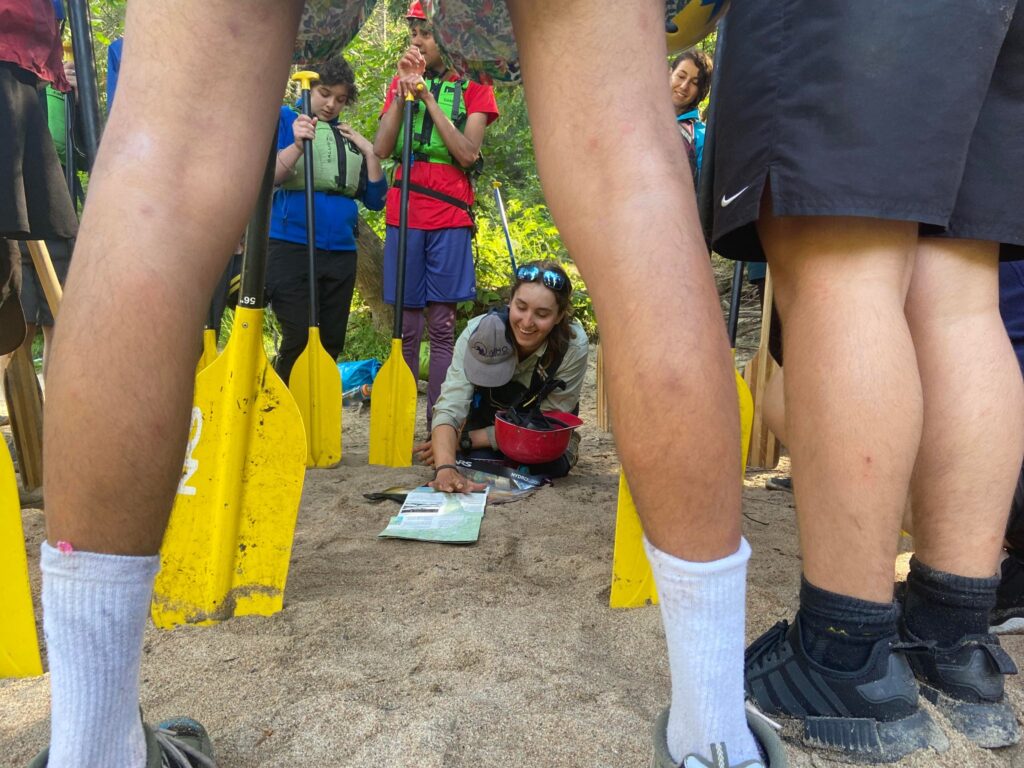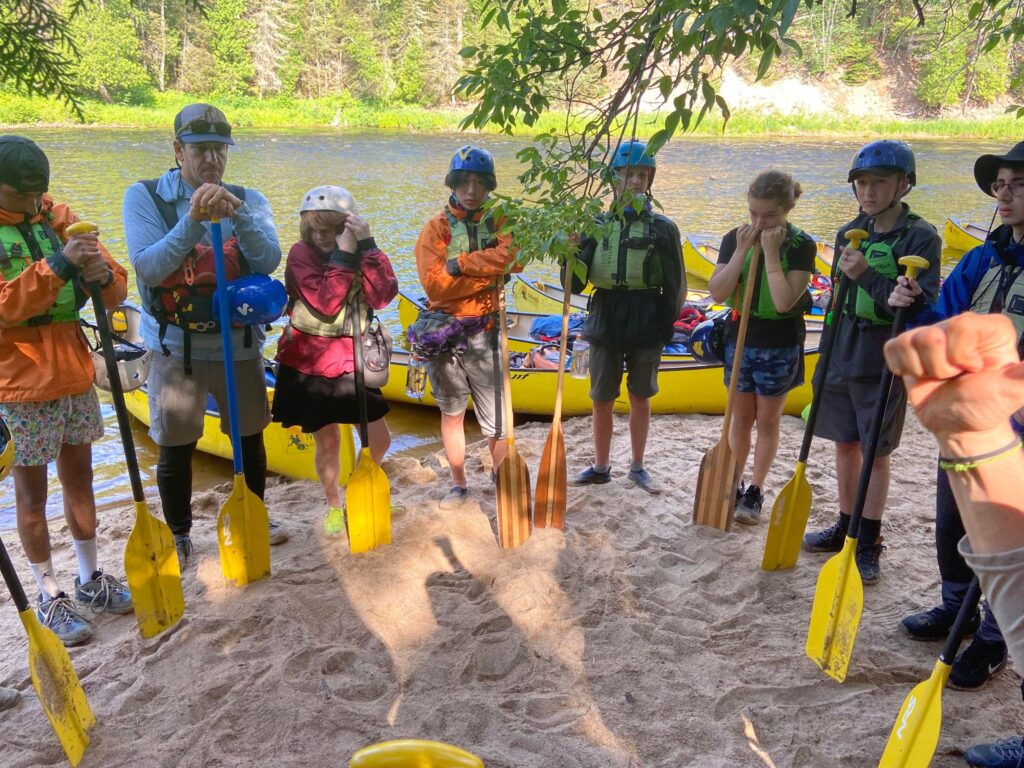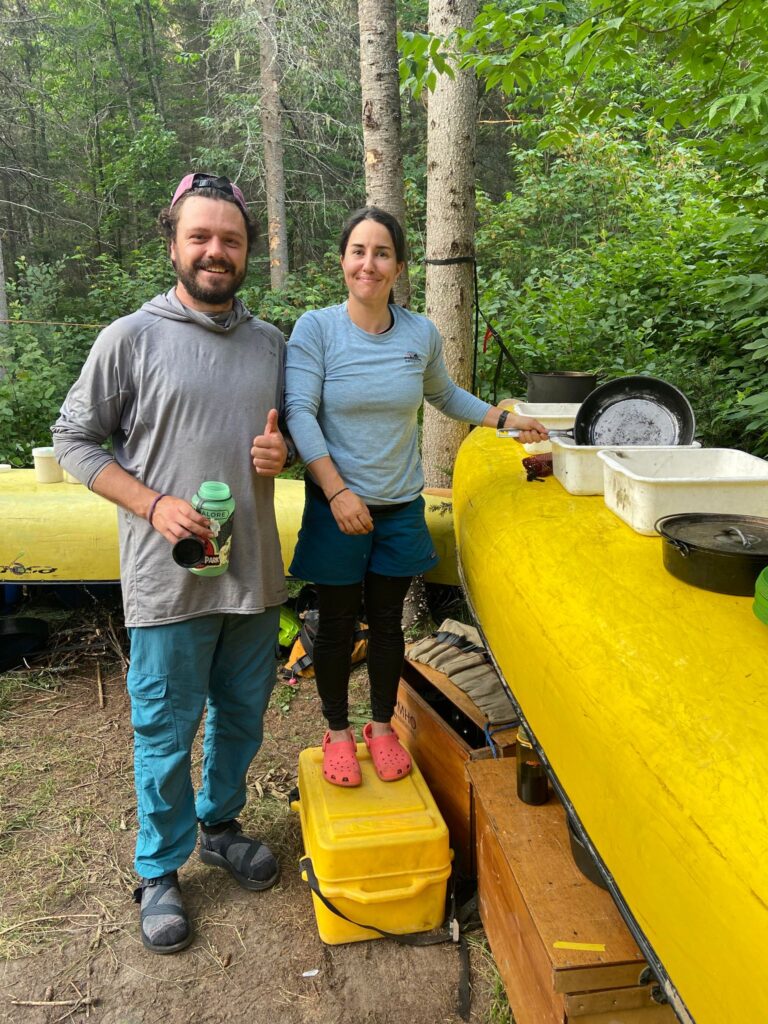Today, we face our first major challenge regarding distance. We’ll be paddling 21 km with one set of rapids along the way, which we’ll go look at before going down. We’ll see exactly why it’s called Zig Zag rapids.
We also face our friend Edwind (headwind) for the first time over a sustained period. He’s popped up here and there over the days, but today he’ll be blowing in our faces consistently.
We awake to the traditional sound of the ukelele played by the dynamic duo of Marie-Michelle and Julien.
As operation “camp disassembly” goes, there’s still some hesitation here and there, but the chaos is becoming increasingly organized. One thing that doesn’t help the participants is that every day they have different tent partners and so a new communication process must be reestablished daily. But that’s how we make new friends, right?
Breakfast includes oatmeal, cereal, and toast off the fire. To make sure everyone is wide awake, Marie-Michelle starts the paddle version of musical chairs, and Julia is the winner.
As with tent partners and campsite chores, canoe teams are also mixed up daily. The participants quickly notice that communication between team members is essential. Paddling becomes more efficient and the zig zag trajectories of the first days are replaced by cleaner lines.
As was expected, the armada stretches out when the headwind shows up. Julien’s instruction to maintain a regular cruising speed is harder to accomplish in these conditions. Emeric and Jesse trail behind the group—Emeric prefers fishing to paddling. He catches both a pike and bass today. The leading group makes frequent stops to allow the stragglers to catch up. After a lunch break of bagels, Wowbutter (i.e., peanut-free butter) and strawberry jam, we take a group photo and head back out.
Unfortunately, the wind has not calmed down during our lunch break, but we’ve only got a bit further to go before we reach Zig Zag rapids. We stop just ahead of the rapids to “read” them. We’ll have to work a bit to follow the zig zag of the most promising passage. The teams consult to find the best line and to agree ahead of time on how to paddle through it. I’m teamed up with Ève and we’re clear on what we need to do. We make our way to the canoe line-up and when it’s our turn, we pass through with flying colours, as do all the other participants. The apprehensions of the first days are a distant memory.
As the day goes on, we have a few more white-water sections and a rapid that we read from our canoes to find our line. It’s not any harder than the first time. The participants are starting to get confident in their ability to overcome the obstacles.
When we arrive at our new home for the evening, the campsite is much higher than the water level, so we set up a human chain to pass the barrels and other equipment to the top. The chore teams get to work, and the campsite quickly takes shape.
As I write these lines, we’ve just eaten dinner and almost everyone is sitting around the campfire. It’ll soon be bedtime, and I can guarantee that no one will need to be told to go to sleep, least of all me.
See you tomorrow!
Louis-Étienne Prévost
Volunteer photographer-blogger for the On the Tip of the Toes Foundation
—
Translated by Anna Tomczyk
